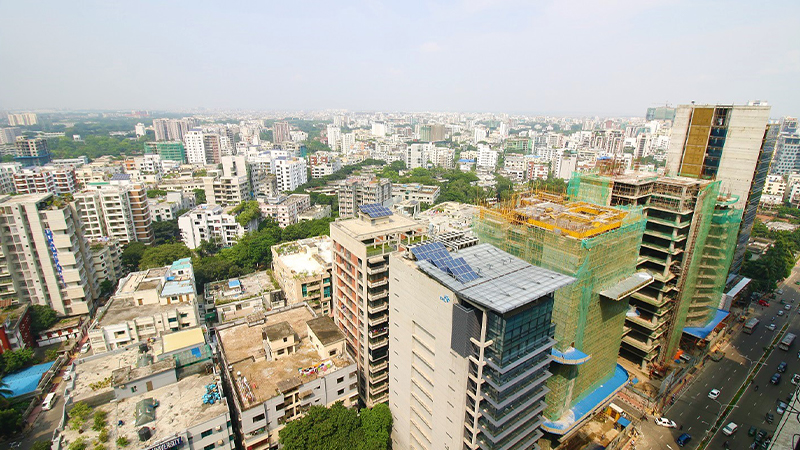Housing Real Estate Sector in Bangladesh Present Status and Policies Implications
Introduction
The housing real estate sector in Bangladesh plays a crucial role in the country’s economic development, particularly given its dense population and significant housing shortages. Despite the pressing demand for housing, the sector has struggled to meet the needs of the majority, particularly low- and middle-income households. This summary explores the current status, challenges, and policy implications surrounding this vital sector.

Current Status of the Housing Real Estate Sector
Bangladesh’s real estate market has seen substantial growth over the past two decades, yet it still faces a significant gap between housing supply and demand. The Real Estate and Housing Association of Bangladesh (REHAB) reports that only 8,000 to 10,000 housing units are currently supplied annually, while the demand ranges from 600,000 to 800,000 units nationwide. This discrepancy highlights a persistent housing crisis, particularly acute in urban areas like Dhaka, where rapid urbanization has compounded the issue.
The sector contributes approximately 12-14% to the nation’s GDP and employs around 2 million individuals across various roles including architects and laborers. However, despite its economic significance, the sector remains underdeveloped in terms of catering to lower-income groups. The average turnover in real estate is estimated at Tk. 20 billion annually, generating about Tk. 2 billion in government revenue.
Urbanization and Its Impact
Urbanization in Bangladesh is accelerating at an estimated rate of 5-6% per year, with projections indicating that by 2025, 50% of the population will reside in urban areas. This rapid migration from rural to urban settings heightens the demand for residential units. Dhaka alone requires around 60,000 new units annually to accommodate its growing population.The increasing urban density has led to a rise in property values and rental prices, further complicating access to affordable housing. Developers have begun targeting middle-income groups more aggressively; however, many low-income families remain without adequate housing options.
Challenges Facing the Sector
Several challenges hinder the growth of the real estate sector in Bangladesh:
- Financing Issues: Access to affordable financing remains a significant barrier for both developers and potential homeowners. High-interest rates and stringent lending criteria restrict opportunities for low- and middle-income families to secure housing.
- Regulatory Environment: Inadequate policy frameworks have stifled growth. There is a pressing need for policies that support sustainable development and provide incentives for affordable housing projects.
- Land Availability: The scarcity of suitable land at reasonable prices poses another challenge. Much of the available land is either too expensive or not conducive to residential development.
Policy Implications
To address these challenges and foster organic growth within the housing sector, several policy measures are recommended:
- Enhancing Financing Options: The government should work towards creating more favorable financing conditions for both developers and homebuyers, possibly through subsidies or reduced interest rates.
- Regulatory Reforms: Streamlining regulations can facilitate smoother processes for obtaining permits and approvals for new developments.
- Promoting Affordable Housing: Targeted incentives for developers who focus on affordable housing can help bridge the gap between supply and demand.
- Engaging Non-Resident Bangladeshis (NRBs): Encouraging NRBs to invest in local real estate can provide additional capital flow into the market.
- Urban Planning Initiatives: Comprehensive urban planning strategies that incorporate mixed-use developments can optimize space usage while addressing housing needs.
Conclusion
The housing real estate sector in Bangladesh holds immense potential but requires strategic interventions to realize its capabilities fully. By addressing financing challenges, regulatory hurdles, and promoting affordable housing initiatives, stakeholders can create a more inclusive environment that meets the diverse needs of its population while contributing significantly to economic growth. As urbanization continues to reshape Bangladesh’s landscape, proactive measures will be essential to ensure that all citizens have access to adequate housing solutions.
Also Read: Hungarian Workers in the Housing Energy Crisis – Issues and Community-Based Solutions
